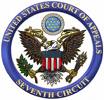Drug Courts, Racial Disparities, and Restorative Justice
 I have a new paper on SSRN dealing with drug courts, focusing particularly on their (poor) prospects as a mechanism to address racial disparities in the prison population. Here is the abstract:
I have a new paper on SSRN dealing with drug courts, focusing particularly on their (poor) prospects as a mechanism to address racial disparities in the prison population. Here is the abstract:
Specialized drug treatment courts have become a popular alternative to more punitive approaches to the “war on drugs,” with nearly 2,000 such courts now established across the United States. One source of their appeal is the belief that they will ameliorate the dramatic racial disparities in the nation’s prison population – disparities that result in large measure from the long sentences handed out for some drug crimes in conventional criminal courts. However, experience has shown that drug courts are not a “do-no-harm” innovation. Drug courts can produce both winners and losers when compared to conventional court processing, and there are good reasons to suspect that black defendants are considerably less likely to benefit from the implementation of a drug court than white defendants. As a result, drug courts may actually exacerbate, rather than ameliorate, racial disparities in the incarceration rate for drug crimes. Thus, the concerns of inner-city minority communities with the war on drugs may be better addressed through a different sort of innovation: a specialized restorative justice program for drug offenders. Although treatment may be part of such a program, the real centerpiece is the “community conferencing” process, which involves mediated dialogue and collective problem-solving involving drug offenders and community representatives. Where the drug treatment court gives a dominant role to criminal justice and therapeutic professionals, the community conferencing approach empowers lay community representatives, and is thereby capable of addressing some of the social capital deficits that plague inner-city minority communities with high crime and incarceration rates.
The article is forthcoming in the Stanford Law & Policy Review.

